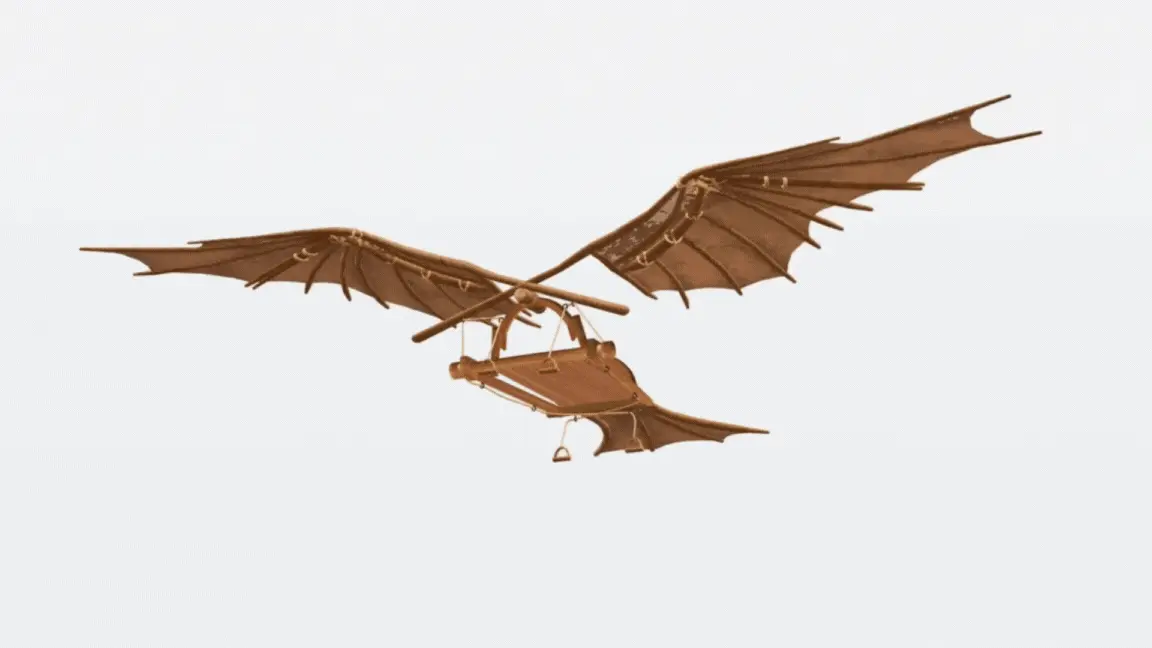Natural Sciences
How a Dead Seal Sparked Theodore Roosevelt's Lifelong Passion for Conservation
As a child, the future president acquired a marine animal's skull, which became the first specimen in his natural history collection
See the Wonders of Bird Engineering in These Photos of Intricate Nests
In a new book, a curator at England's Natural History Museum describes rare and interesting nests and eggs—from the house sparrow to the village weaver—and the lessons they hold for avian conservation
These Fish Transformed Their Dorsal Fins Into Taste Buds
From tasting to hunting to hitching a ride, some fins have evolved for a variety of uses beyond swimming
‘Fearsome’ Saber-Toothed Cats Needed Their Baby Teeth and Mommies, Too
According to new research, two sets of sabers and unusual lower jaw anatomy show that the saber-toothed cat Smilodon fatalis delayed adulting with a long weaning period
Stonehenge's Massive Central Stone May Have Been Shipped From Hundreds of Miles Away
Researchers think they've solved the mystery of the monument's Altar Stone, which could have traveled all the way from Scotland
Why Are Giant, Ancient Tropical Trees Dying?
Scientists from an international project are racing to figure out what kills these anchors of their ecosystems—before it's too late to save them
Rare 'Absolutely Tiny' Plant, Not Seen for More Than a Century, Found in Vermont
The last time a botanist recorded a sighting of false mermaid-weed in the state was in 1916
Glowing Sea Creatures Have Been Lighting Up the Oceans for More Than Half a Billion Years
New research on branching animals known as octocorals pushes the early days of bioluminescence back over 200 million years
'Strange' New Prehistoric Bird Discovered in China and Named for David Attenborough
The proto-bird lived some 120 million years ago and did not have teeth—a trait more similar to birds of today than to birds of its time—sharpening scientists' understanding of avian evolution
Where Did Butterflies Come From? This Scientist Is On the Case
Akito Kawahara has spent his life devoted to lepidoptera. Now he’s correcting the record on where they first evolved
See What Charles Darwin Kept in His 'Insanely Eclectic' Personal Library, Revealed for the First Time
On the English naturalist's 215th birthday, more than 9,000 titles from his expansive collection are now accessible online
Police Find Ancient Teenager’s Body, Preserved in Irish Bog for 2,500 Years
Nicknamed the "Bellaghy Boy," he was likely between 13 and 17 when he died around 500 B.C.E.
Humans and Neanderthals Lived Side by Side in Northern Europe 45,000 Years Ago, Study Finds
Archaeologists identified bone fragments of prehistoric modern humans in Germany, suggesting several millennia of coexistence with Neanderthals before the species disappeared
California Grizzlies Weren't as Big—or Bloodthirsty—as People Once Thought
The now-extinct bears were mostly vegetarians and measured about the same size as today's North American grizzlies
Will Maui's Beloved 150-Year-Old Banyan Tree Survive the Scorching Wildfires?
Amidst the devastation of Lahaina, a coastal town in Maui, the tree is burned but still standing
See Stunning Images of Female Birds, Often Overlooked by Wildlife Photographers
The sex frequently neglected by birders and scientists takes the spotlight in the Audubon Photography Awards’ Female Bird Prize
Scientists Release Record-Breaking Number of Baby Seahorses Into Sydney Harbor
The team installed eight new “seahorse hotels,” which will provide much-needed homes for the endangered animals
Explore Animated Models, Digitized Sketches and More in Leonardo da Vinci's Largest-Ever Online Retrospective
The new Google Arts & Culture hub features high-resolution scans, 3D renderings and artificial intelligence experiments
Butterfly Group With Fiery 'Eyes' Is Named After 'Lord of the Rings' Villain Sauron
Beyond their eye-like wing pattern, the two new species don't seem to show any signs of evil that would link them to Mordor
New York's Natural History Museum Unveils a Canyon-Like New Wing
With butterflies, bugs and an atrium that looks like it's carved into rock, the Gilder Center will open its doors to the public on May 4
Page 1 of 15
:focal(700x527:701x528)/https://tf-cmsv2-smithsonianmag-media.s3.amazonaws.com/filer_public/de/06/de066803-ff20-4116-8e49-7e0dab59c101/seal.jpg)
:focal(1521x1362:1522x1363)/https://tf-cmsv2-smithsonianmag-media.s3.amazonaws.com/filer_public/ec/3c/ec3cf3c7-94ac-495a-8c68-d3061171e420/eggsandnests_-20211210-248-bokmakierie.jpg)
:focal(2464x1643:2465x1644)/https://tf-cmsv2-smithsonianmag-media.s3.amazonaws.com/filer_public/5a/6a/5a6ad56d-e2a7-467e-93bc-7640f7f989a2/dsc_3354.jpg)
:focal(2289x1482:2290x1483)/https://tf-cmsv2-smithsonianmag-media.s3.amazonaws.com/filer_public/46/f9/46f9d007-90c0-458a-a48b-d670a979d6c6/gettyimages-1041335158.jpg)
:focal(2904x2307:2905x2308)/https://tf-cmsv2-smithsonianmag-media.s3.amazonaws.com/filer_public/4b/47/4b470142-cdee-449a-978b-3892ff29f8b8/gettyimages-682586546.jpg)
:focal(2464x1643:2465x1644)/https://tf-cmsv2-smithsonianmag-media.s3.amazonaws.com/filer_public/79/2b/792bd175-4567-4c8f-b685-777ca304e1ef/gettyimages-500241484.jpg)
:focal(736x491:737x492)/https://tf-cmsv2-smithsonianmag-media.s3.amazonaws.com/filer_public/b4/9e/b49e7d8f-de1a-439a-8b9f-a85c41f79267/445170324_844624177701751_1024934265806053345_n.jpg)
:focal(2128x1419:2129x1420)/https://tf-cmsv2-smithsonianmag-media.s3.amazonaws.com/filer_public/6f/64/6f64a534-be29-44a3-a883-0c19b5e99984/ab1_-_branched_bamboo_coral_3689_7-25-09_jsl_0589.jpg)
:focal(391x361:392x362)/https://tf-cmsv2-smithsonianmag-media.s3.amazonaws.com/filer_public/57/01/5701e0ab-09fb-4524-80a3-67afd4b92318/1709658044-image-19.webp)
:focal(1133x761:1134x762)/https://tf-cmsv2-smithsonianmag-media.s3.amazonaws.com/filer_public/c2/e6/c2e62a59-37f8-4b30-bf6f-3ddde26c8fa5/mar2024_c03_prologue.jpg)
:focal(573x426:574x427)/https://tf-cmsv2-smithsonianmag-media.s3.amazonaws.com/filer_public/11/0a/110a8858-6904-4e4d-afc1-0faa7ec74fde/1882_haig_darwins_a205_001.jpg)
:focal(712x535:713x536)/https://tf-cmsv2-smithsonianmag-media.s3.amazonaws.com/filer_public/25/7e/257e376b-f925-4478-863d-1dddec3aa82a/image_1_-_excavation_1.jpeg)
:focal(324x243:325x244)/https://tf-cmsv2-smithsonianmag-media.s3.amazonaws.com/filer_public/dc/ac/dcac5353-55e9-4314-bbb9-65dd5dad06b9/bonefragment_cropped.jpg)
:focal(1024x585:1025x586)/https://tf-cmsv2-smithsonianmag-media.s3.amazonaws.com/filer_public/d3/11/d3111f19-4c47-4b13-99ff-9bf6b452c3cb/49185352476_9ee103e012_k.jpg)
:focal(3884x2626:3885x2627)/https://tf-cmsv2-smithsonianmag-media.s3.amazonaws.com/filer_public/21/89/21899042-4f39-4694-9270-f6fd4bd9cf43/banyan_2.jpg)
:focal(1823x1371:1824x1372)/https://tf-cmsv2-smithsonianmag-media.s3.amazonaws.com/filer_public/9c/44/9c446966-e224-4ab1-a60c-5fbdb5792989/aud_apa-2023_american-kestrel_a1_25457-0_photo-robert-kaplan.jpg)
:focal(1024x770:1025x771)/https://tf-cmsv2-smithsonianmag-media.s3.amazonaws.com/filer_public/a1/ff/a1ff45d7-ee56-41b2-ab3b-6c4485f962ca/361572695_780273670765636_3515584681492424099_n.jpeg)

:focal(1280x768:1281x769)/https://tf-cmsv2-smithsonianmag-media.s3.amazonaws.com/filer_public/53/71/53711117-98b5-4644-a759-fb148dcc0779/saurona.jpeg)
:focal(1500x1129:1501x1130)/https://tf-cmsv2-smithsonianmag-media.s3.amazonaws.com/filer_public/fe/07/fe07bc6b-9b07-4690-9792-e4ccdb51b28a/ak_230417_6414.jpg)